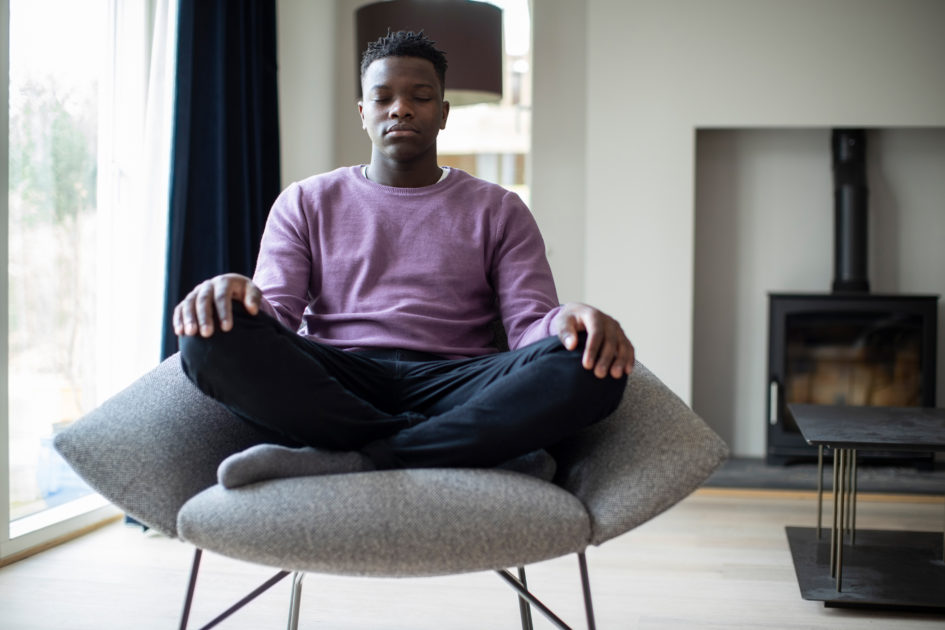Meditation has many benefits including decreasing anxiety and improving sleep quality. Today, when feeling stressed is all too often the new normal, improving your meditation practice can be key to decreasing your daily stress. Meditative breathing activates the parasympathetic nervous system and helps you to relax. The book Just Sit, by Sukey and Elizabeth Novogratz, offers some basic instructions on how to meditate and an eight-week challenge to help enhance your practice.
Instructions for Sitting:
1. Sit – anywhere you are comfortable, e.g., chair, floor, outdoors.
2. Close your eyes – or keep them open, but find something to focus on.
3. Keep your arms and hands resting on your thighs.
4. Position your legs and feet so your spine stays straight. If your are sitting in a chair, keep your feet on the floor. If you are sitting on a cushion, keep your knees below your hips.
5. Set a timer – set your phone to “do not disturb” and start with 3 minutes.
6. Warm up – just like you would before exercise. Prepare your body. Take stock in how you are feeling and start with 10 deep breaths.
7. Take a moment to pay attention to your thoughts and try to block out the chatter running through your mind, e.g., “I do not have time for this,” and sit anyway.
Your breath is your anchor, so focus on it the entire time. As your mind wanders (and it will), bring it back to your breathing.
Daily meditation is as important as brushing your teeth. This eight-week challenge will help you achieve your meditation goals and enjoy the benefits.
Week 1 – 3 minutes daily. Sit for 3 minutes every day and focus on your breath. Keep it simple, close your eyes and focus on your breath. When your mind wanders, come back to your breathing.
Week 2 – 4 minutes each day. Slowly count to four as you inhale and exhale. With each count, touch your thumb to your pointer finger, then to your middle finger, followed by your ring finger and finally your pinkie finger.
Week 3 – 5 minutes of deep-belly breathing. Place your hands on your stomach and as you inhale, feel your belly rise and expand. As you exhale, feel your belly contract. Focus on this when your mind starts to wander.
Week 4 – 6 minutes for a heart-opening meditation. Sit comfortably and imagine a circle of light encompassing the space where your heart is. When you inhale, visualize the light gradually getting brighter. When you exhale, visualize the light gradually getting bigger.
Week 5 – 8 minutes for a mantra. When you breathe in, silently say something that works for you, e.g., “I am” or “Om Om.” The key to a mantra is to help keep your breathing and focus on track – be here now.
Week 6 – 10 minutes to listen to the sounds around you. Notice the sounds of birds, the wind, sirens, etc. Still your mind and really listen. When you drift, increase awareness and listen to what is around you.
Week 7 – 15 minutes to change it up. Try sitting with your eyes open. Focus on one object and pay attention its many details. When you wander, bring your attention back to the object.
Week 8 – 20 minutes mastered. Sit and allow whatever to take place: thoughts, sounds, feelings or yawns. Let them come and let them go. If your attention drifts, use the previous weeks’ guidelines as a nudge to bring you back.
The goal for this eight-week meditation challenge is to practice seven days each week. If a day is missed, simply start over with Day 1 of the current week. If the plan takes more than eight weeks, that is OK because the goal is to just sit anyway. Also, try to journal after each session and note what you experienced. Enjoy!

